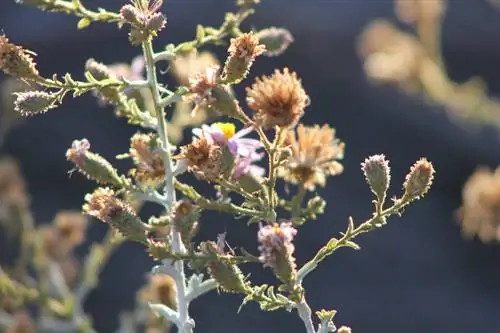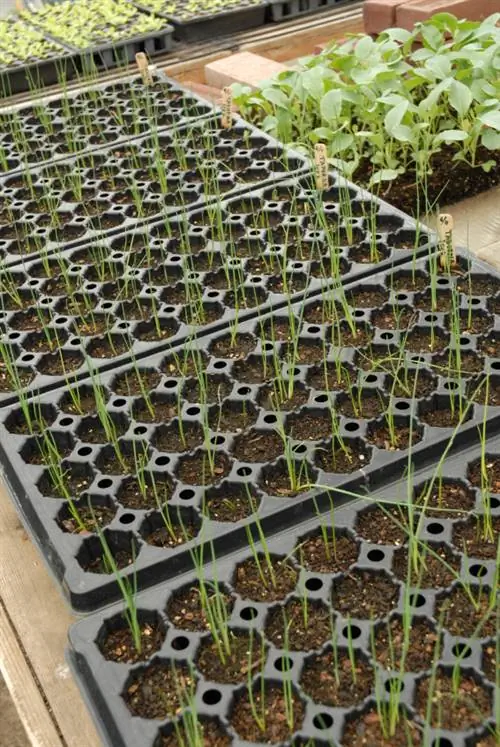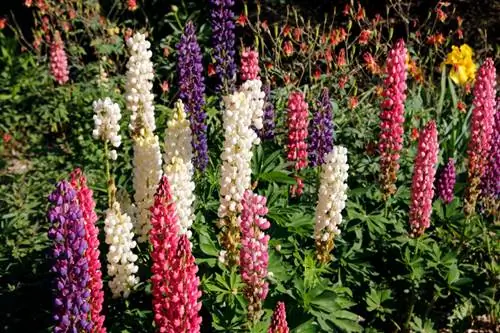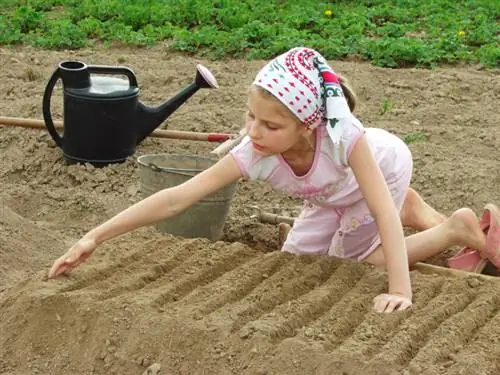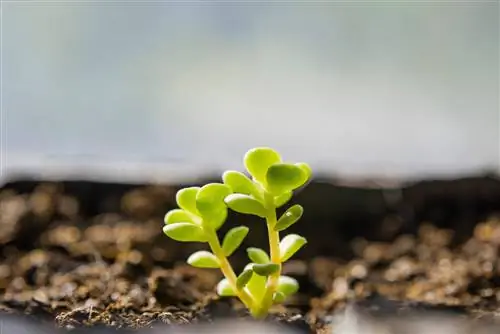- Author admin [email protected].
- Public 2023-12-16 16:46.
- Last modified 2025-01-23 11:20.
The Phacelia has experienced a real boom in European gardens in recent years and not entirely without reason: after all, it is not only an attractive ornamental plant with a long-lasting flowering period, but also a valuable pasture for bees and green manure. Plant.
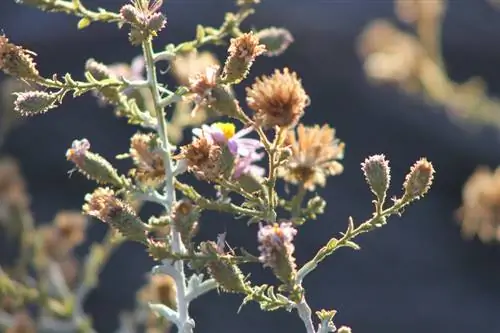
How do you sow Phacelia seeds correctly?
Phacelia seeds should be mixed with fine sand and sown evenly in well-lit, even hard or stony soil. The seeds should be raked in lightly and watered immediately as they are dark germinators.
Choose the right variety and pack size
Most subspecies of this plant, also known as “bee friend”, bloom light blue to violet-bluish. There are differences in the height of growth, which, for example, is slightly lower in the Phacelia purshii variety than in the widespread Phacelia tanacetifolia variety. As a rule, you can't go wrong with the location and substrate as long as the plants get enough sunlight. It is not without reason that the bee friend is considered a soil improver and green manure, so that even hard and stony soils can serve as cultivation areas. For an area of around 50 square meters, 200 grams of Phacelia seeds are generally sufficient. However, packs containing up to 1 kilogram are also available for private gardeners, as the seeds remain germinable for a relatively long time and can therefore be flexibly re-sown in areas that have already flowered.
The Phacelia in the beekeeper's garden
The Phacelia is not only popular among beekeepers because each of its individual flowers can produce an astonishing amount of flower nectar for the bees during the flowering period. After sowing the seeds, depending on the location and season, it only takes around 5 to 7 weeks for the first flowers to open. This means that months such as August and September, in which only a few plants of interest to bees bloom, can be provided with additional food for the busy nectar collectors. In addition, the basically annual Phacelia can be successfully established permanently in the garden by self-sowing the seeds if the plant is not harassed by fast-growing weeds.
Sowing the seeds easily
The Phacelia seeds are very fine, so sowing and dosing by hand can sometimes be a little difficult. For better distribution of the seeds, it can therefore be useful to mix the seeds with plenty of fine sand.
Tip
Since the Phacelia is a dark germinator, the seeds should be lightly raked into the soil after sowing and watered immediately.

